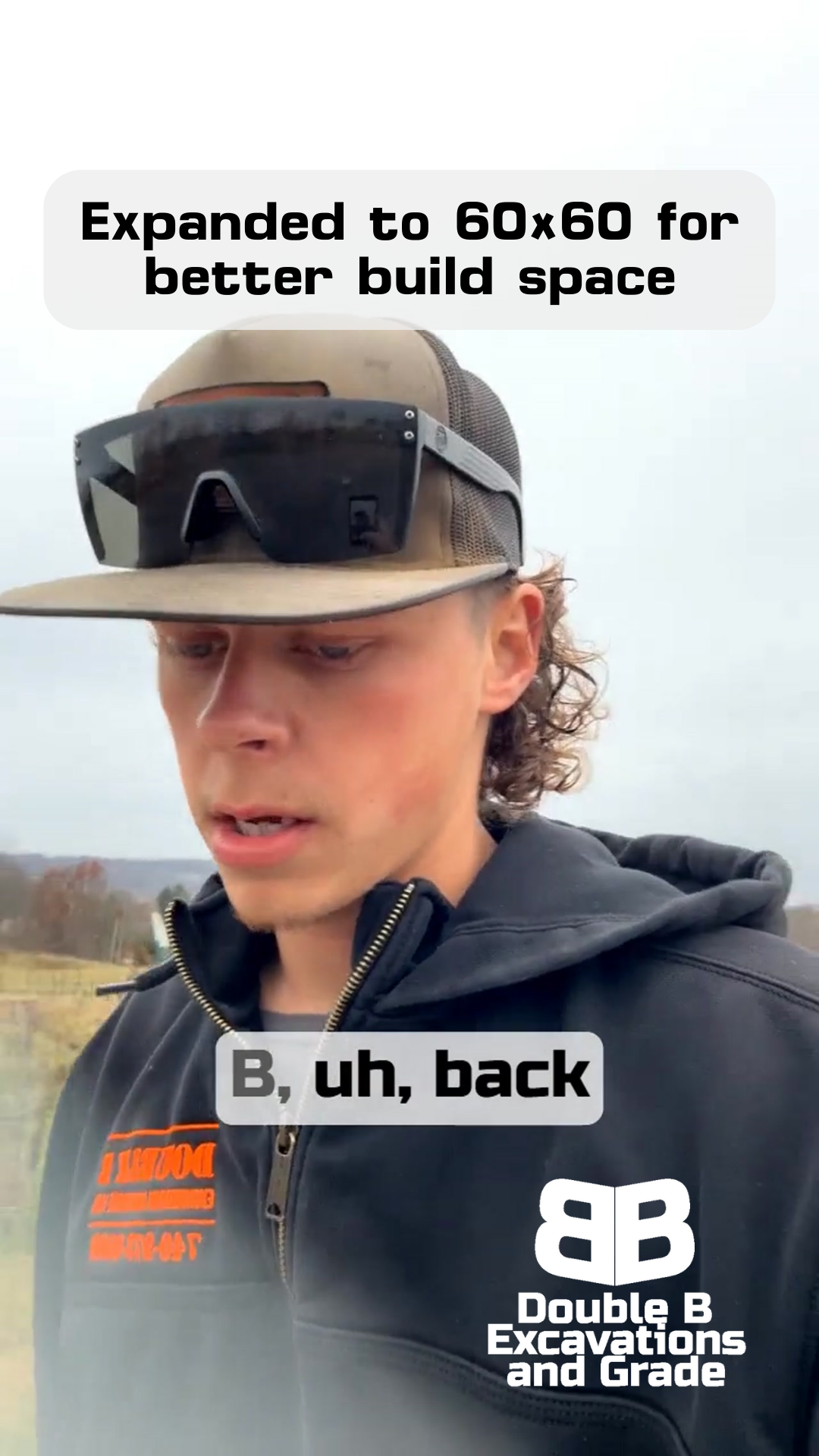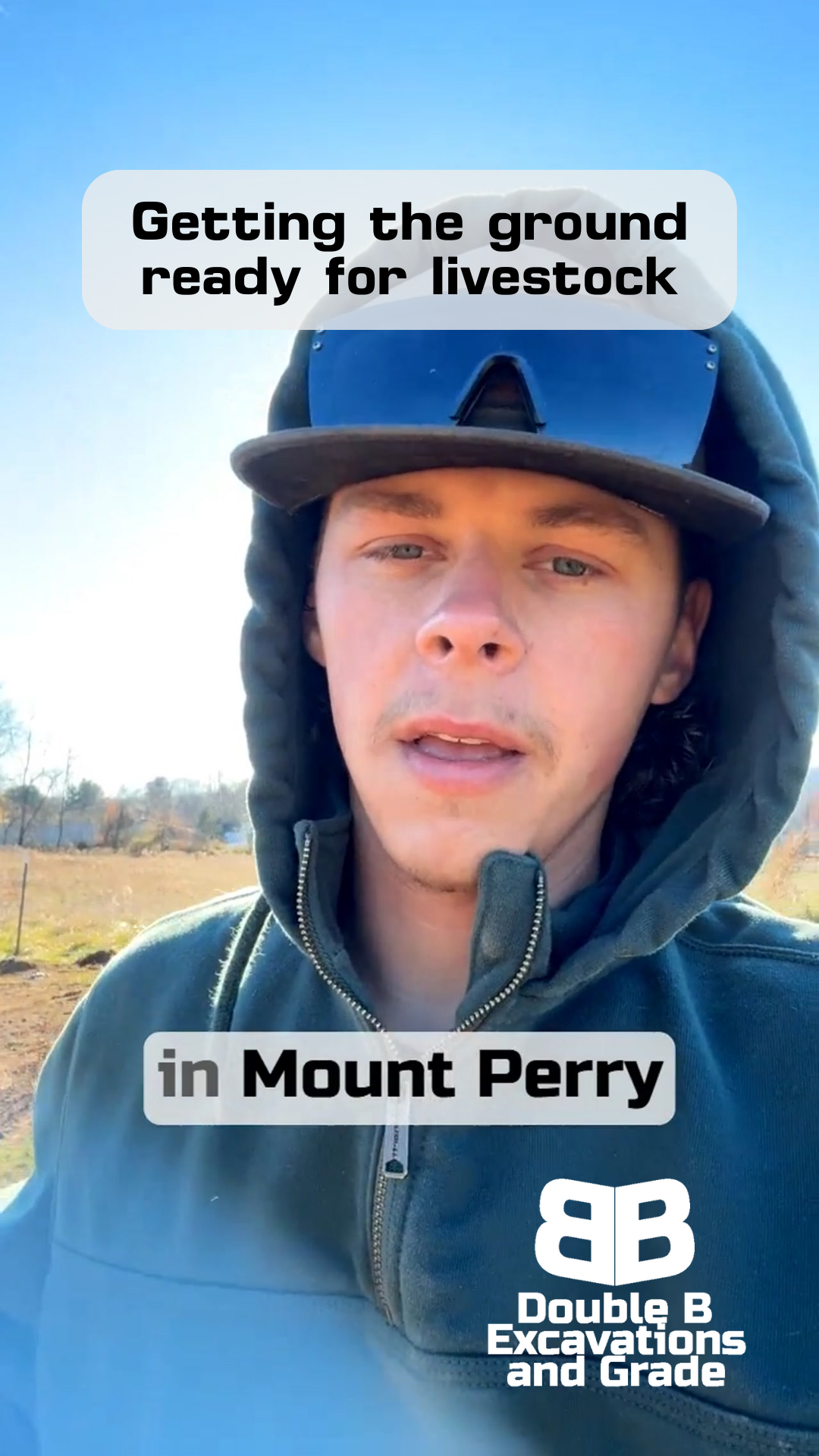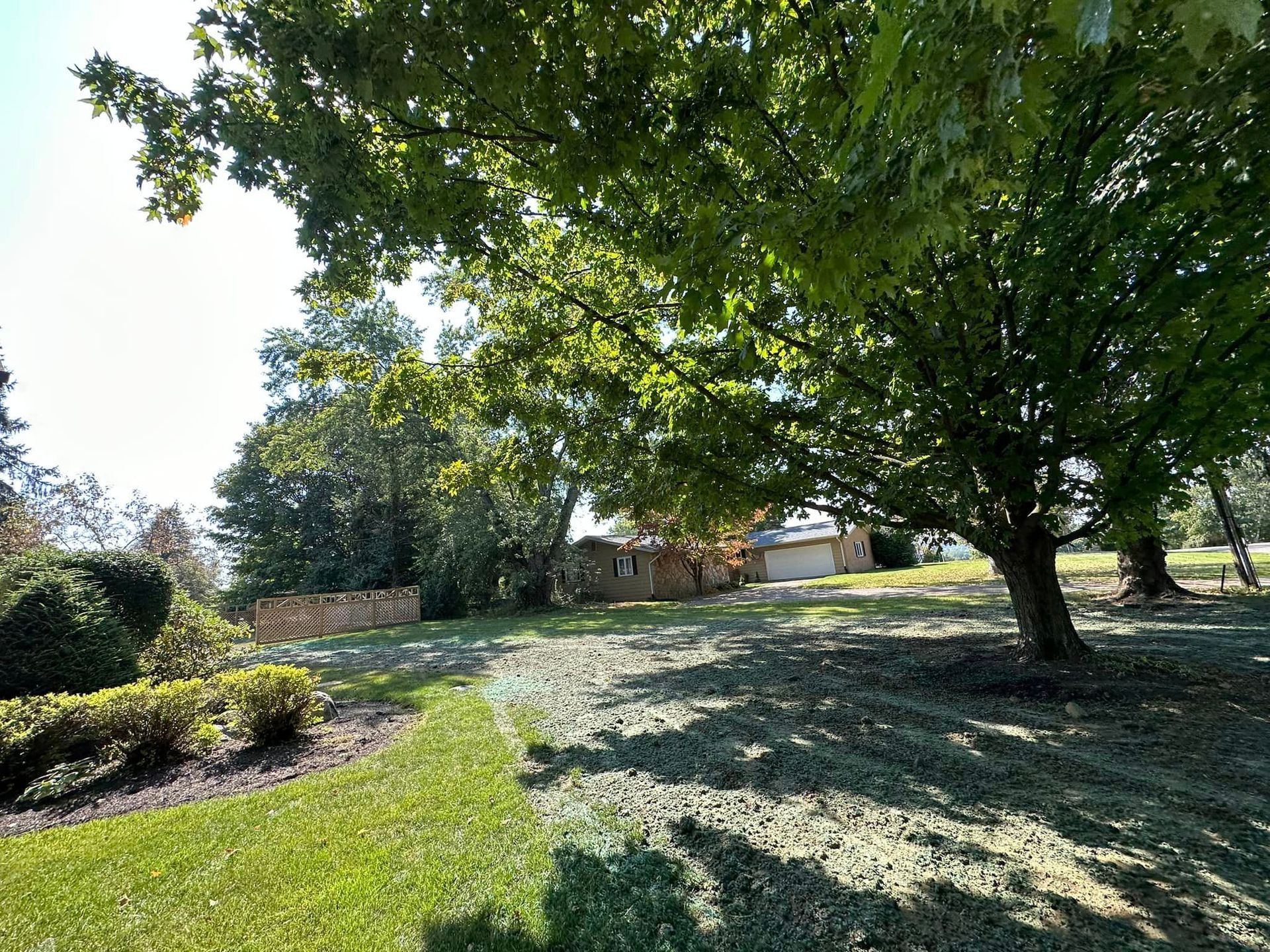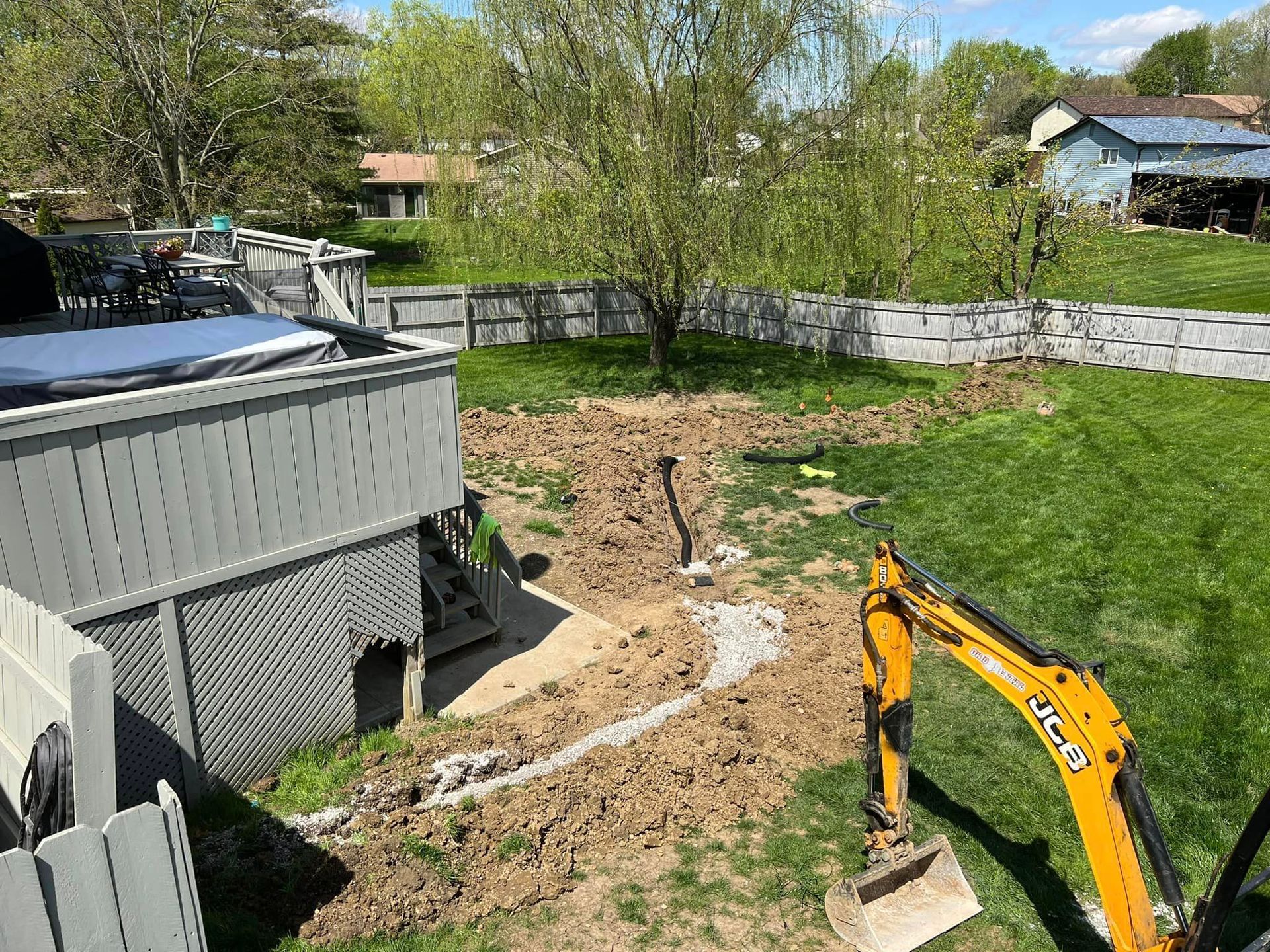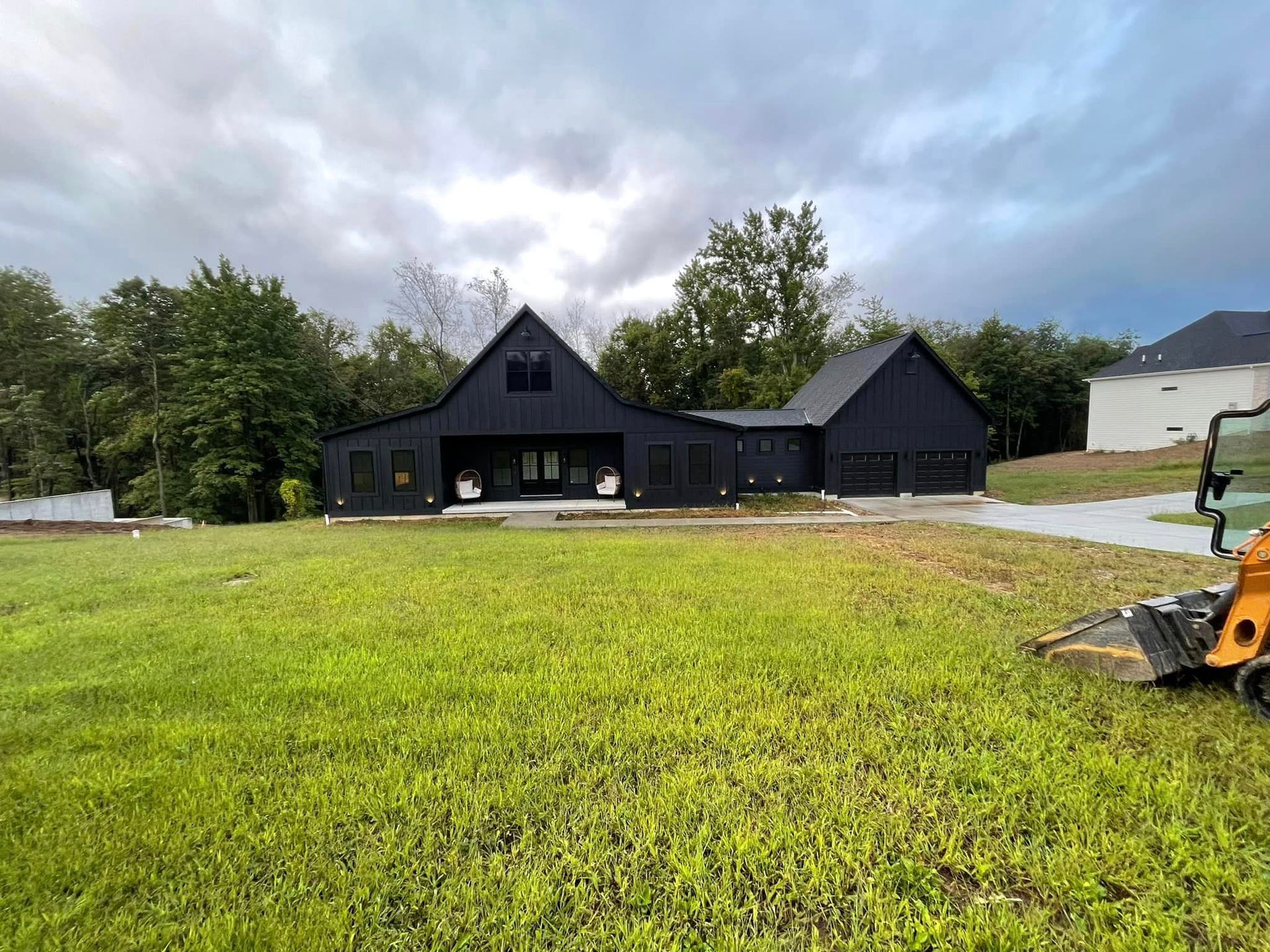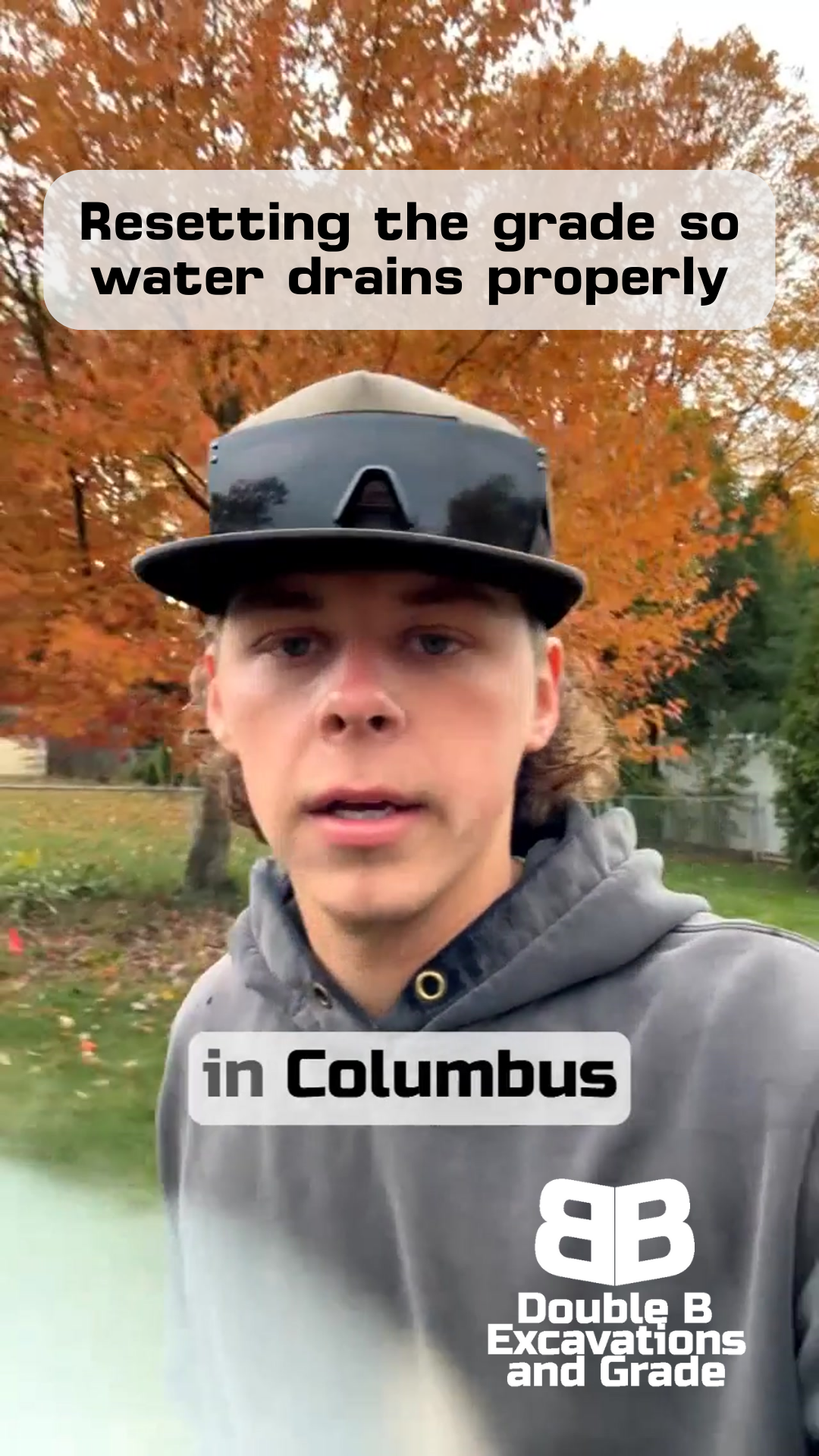Why Rain is an Excavator's Best Teacher: A Real-Time Drainage Test
Double B Excavations & Grade LLC
Using Weather to Test Our Work
THE RAINS CAME THROUGH - AND WENT WHERE THEY WERE SUPPOSED TO!
You know what makes an excavator smile on a rainy day?
Watching water flow exactly where it's supposed to go.
While most folks are rushing to get out of the rain, we're out there watching our drainage work in action.
Today's storm wasn't in our work schedule, but it gave us something better - a real-world test of our latest project.
In this business, you can plan all you want on paper, but nothing beats seeing your work handle nature's challenges.
That's why we actually look forward to these unexpected rainstorms.
They're like pop quizzes from nature, showing us exactly how well we understood the assignment.
Welcome to Double B!
The Setup
Let's talk about what we built here. We recently completed a driveway project where we installed swales on both sides. If you're not familiar with swales, think of them as carefully designed channels that guide water where you want it to go. It's not just about digging ditches - it's about understanding how water naturally wants to move and working with that flow.
For this particular driveway, we needed to make sure that when it rained, the water wouldn't pool on the surface or cause erosion along the edges. That's more important than most people realize.
A driveway that can't handle water properly won't just be annoying during storms - it can develop serious problems over time. Potholes, washing out, even foundation issues if the water's not managed right. That's why we take drainage so seriously from day one.
Nature's Test
Today's rainstorm wasn't just a little sprinkle - it was one of those good soakers that really puts our work to the test. The kind where you can actually see how water moves across the property. And let me tell you, there's nothing quite like watching your drainage plan come to life.
When we check our work during a storm, we're looking for specific things. Are there any puddles forming on the driveway? Is water flowing smoothly through the swales? Is it moving away from the property like we planned? It's like having nature grade your homework - there's no hiding from the results.
Reading the Results
I've got to say, watching those swales work today was pretty satisfying. Not a single puddle on the driveway, even during the heaviest part of the storm. The water flowed exactly where we designed it to go, following those swales we built on both sides. That's what we call a win in this business.
But it's more than just keeping the driveway dry today. When we see drainage working this well during a heavy rain, we know we've built something that's going to last. Those swales aren't just moving water - they're protecting the driveway from erosion, preventing washouts, and keeping the base material where it belongs. That's going to save the homeowner a lot of headaches (and money) down the road.
Why Natural Testing Matters
Here's something I've learned over years of doing this work: you can draw up the perfect drainage plan on paper, but real-world testing is what really counts. Every property is different, with its own quirks and challenges. The way water moves across land isn't always what you'd expect - that's why these rainstorms are such valuable teachers.
When we get a good rain like today, we learn something new every time. Maybe we notice a slight adjustment that could make the drainage even better on our next project. Or we confirm that a technique we've been using really holds up under pressure. That's the kind of knowledge you can't get from a textbook.
Practical Takeaways
If you're a property owner, here's what to watch for during the next big rain:
- Is water pooling anywhere on your driveway?
- Does water flow away from your buildings naturally?
- Are your drainage paths handling the volume without overflowing?
- Do you see any erosion starting to form?
These are the same things we look for when we test our work.
Catching drainage issues early can save you from bigger problems down the road.
Wrapping it Up
Some might call a rainy day a work stopper, but for us, it's more like a final exam. There's nothing better than seeing your drainage work perform exactly as planned when Mother Nature turns up the pressure. It's proof that taking the time to do things right from the start really pays off.
Having drainage concerns on your property? We'd love to take a look. After all, the next big rain is always just around the corner - better to be ready for it than sorry after it.
